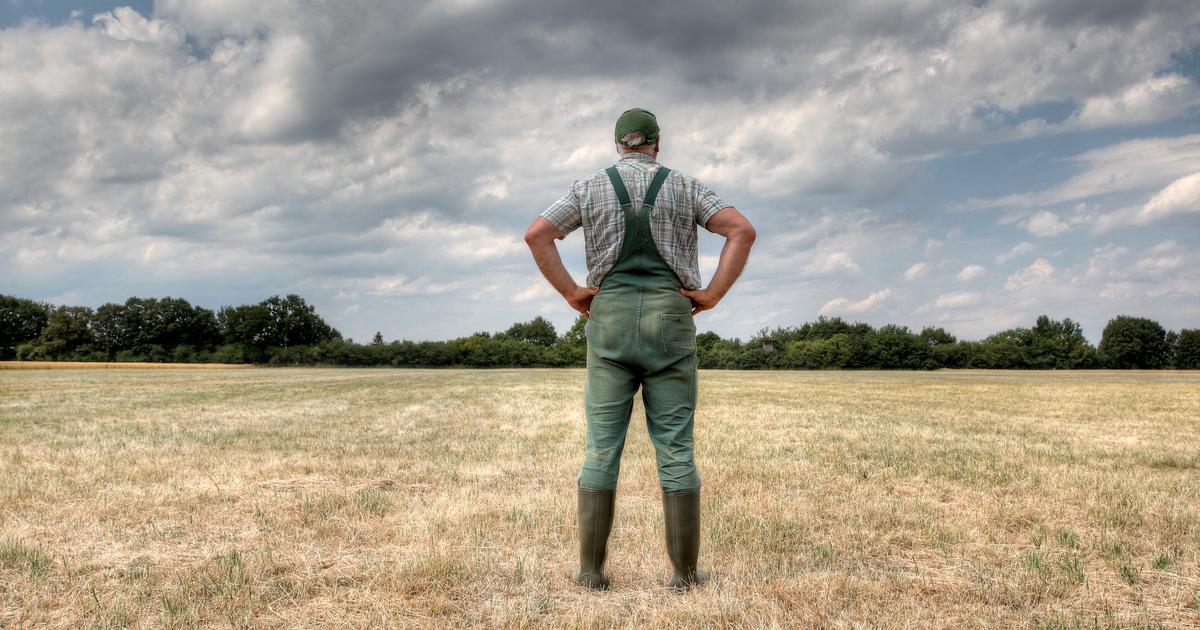Despite some areas still in tension, the water tables in France are generally in a much better state than last year, but for two months their situation has barely changed, fueling fears of a return of drought during the summer , synonymous with water restrictions.
As of March 1, 46% of the water tables are above monthly normals and 36% remain below, the Geological and Mining Research Bureau (BRGM) indicated on Thursday.
The figures do not yet take into account recent Mediterranean episodes, including this weekend's storm Monica, but the effect of these precipitations which run off a lot should be
“largely limited”
, according to the BRGM.
The situation is almost the same as at the end of January, where after a strong recharge at the beginning of winter, the filling began to slow down.
However, it remains much better than last year at the same time, when 80% of levels were below normal.
Heterogeneous recharges
In February, a month that was very wet in places, the recharges were
“heterogeneous”
.
The rains that fell in recent weeks
“probably had difficulty infiltrating deeply through soils with little humidity”
in certain areas, notes the BRGM.
The month was very contrasted meteorologically, oscillating between spring temperatures before their time - February was the second hottest ever recorded in France - fueling drought, and sequences of marked and persistent rain in certain regions while Others remained desperately dry.
Between December and the end of February, France recorded an excess of rain of around 10% on average, according to Météo-France.
Good news for certain aquifers, from Brittany to the west of the Massif Central and to the Pyrénées-Atlantiques on the one hand, and from Artois to the Alpine valleys on the other hand, which were able to recharge before the arrival of the spring, when most of the water falling from the sky will be absorbed by the vegetation.
Peak flood in New Aquitaine and insufficient levels in Languedoc
But the black spot remains the Languedoc and Roussillon water tables.
They are lower than last year and even continued to fall in February on the Roussillon plain and the Corbières massif, due to lack of sufficient rain.
The aquifers in southern Alsace, the Saône corridor, and the south of the Massif Central also remain at low or even very low levels.
The rains falling in recent days have made it possible to reach
“flood peaks”
on certain aquifers such as in New Aquitaine and Artois and
“strong increases”
locally, for example in Provence, indicated Thursday during a videoconference Violaine Bault, hydrogeologist at BRGM.
Concerning Languedoc, which experienced its first rainfall in a long time,
“the water table levels have improved in places but nevertheless remain insufficient”
.
“Violent rains are not necessarily the most effective for recharging the water tables”
, a large part of it tending to run off towards rivers and then the sea, explains Ms. Bault.
If we add to this the fact that they fell on extremely dry soils, they were at best sufficient to rehydrate the surface soils but not the deep layers.
Caution for summer
In the South-East, it is
“very difficult”
to envisage levels above normal by spring, estimates the BRGM.
Is the rest of France safe from a summer drought?
If there are reasons to be
“fairly optimistic”
for certain regions
“due to a satisfactory start to recharging”
, the BRGM nevertheless remains
“fairly cautious”
for the coming months.
“In the event of insufficient precipitation in March and April, the state of the aquifers could deteriorate quickly on the reactive aquifers (which recharge and empty more quickly, Editor's note) and slowly on the inertial aquifers”
, where water needs more time to infiltrate, warns the body.
The uncertainty is all the greater as Météo-France anticipates a trend towards higher temperatures for March, April and May, favorable to evaporation and drying of the soil.
In 2023, after another very hot summer, two thirds of the metropolitan departments were still experiencing a
“drought crisis”
red alert in October , leading to significant restrictions on water use for agriculture, industry and populations.

